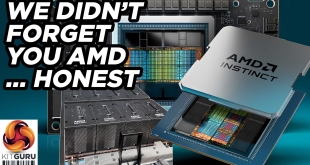While most of the world is talking doom and gloom, there are several market sectors which are doing ‘very well indeed, thank you'. One of those is the workstation market. Information from IDC shows that the second quarter of 2011 actually saw an increase. KitGuru pull out a scientific calculator and measures the performance.
There are at least 4 different workstation markets.
At the lowest level, you have people using standard systems to run workstation applications. This stuff is almost impossible to count, so we won't try. However, a lot of people working in the games industry may well fit into this group – using regular Radeons/general GeForces on an overclocked i5 or i7 [or Phenom II X6 ? – Ed].
The next group makes some effort. They might not buy a Xeon processor, but they are fond of Fire Pro and Quadro card, inserted into standard systems – but with professional drivers. Also hard to count, but PNY and AMD HQ could probably take a good guess.

Now we're looking at systems that were designed, from the start, to be workstations. They have the right mainboards, Xeon processors and workstation graphics. The chassis also looks right. So what gives? Well, in terms of price, these systems seem very competitive, because the system integrator who built them will only sell them for 3-6 months. When the new technology comes through – the range will be updated. For the average KitGuru reader – this will be a very appealing solution. Regularly updated components means less time spent waiting around for a render etc to complete – which means you can invoice more. Nice. However, these systems will not be ISV-certified. ISV means Independent Software Vendor and that includes the likes of AutoDesk.
So where has the increase in workstation shipments been measured?
Professional level, ISV-certified workstations. Normally from the majors and all with healthy margins. Here you can see exactly who has won and lost unit shipments in the “Yes please, we'd like 10 of those £5,000 PCs” market. Remember, this graph is ONLY the increase or decrease from the same period last year – not the overall number shipped.

.
Overall, this sector of the market may only look like 20-25,000 PCs a quarter, but you need to think about the profits involved. Doing a rough calculation, we reckon there's something like £150m in profit (UK annual) from these ISV-Certified workstations. These companies might have to sell MILLIONS of ‘poxy' desktops/notebooks to achieve the same bottom line.
KitGuru says: The reason these devices are profitable is because ‘time really is money' in this market. The more powerful your workstation, the faster you can send out an invoice and move onto the next job. Now that's something worth paying for. Also, Dell and HP are expected to jump through hoops on support for these products – and those pesky support people also expect to get paid. It seems. On a positive note, any market sector growing by almost 6% must be a beacon of bright light in an otherwise dead, black night.
Comment below or in the KitGuru forums.
 KitGuru KitGuru.net – Tech News | Hardware News | Hardware Reviews | IOS | Mobile | Gaming | Graphics Cards
KitGuru KitGuru.net – Tech News | Hardware News | Hardware Reviews | IOS | Mobile | Gaming | Graphics Cards


